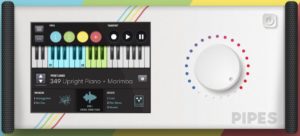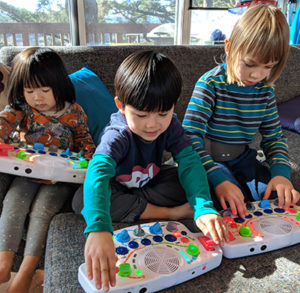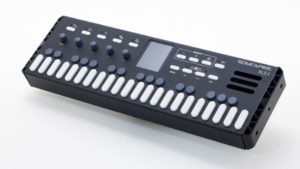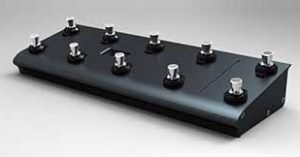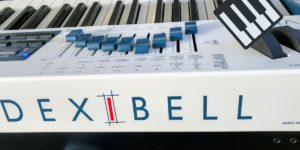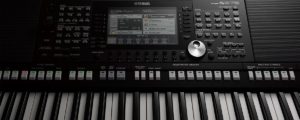Winter NAMM 2018 is January 25 to 28 in Anaheim, California. Get your ear protectors ready!
Even though I’ve been concentrating on the Yamaha Genos™, two Yamaha promotions have not escaped my attention.
Back in October, Yamaha began offering a MOXF promotion: Buy a MOXF and get an FL512M flash memory expansion board and the MOXF Premium Content Pack. Not bad. The MOX6 is my gig workhorse and I still enjoy playing it even though I have often pined for flash expansion memory. If you like the Motif XF sound or miss built-in sequencing, then now is a good time to find a good deal on the MOXF and buy one.
This is one of those rare times when a promotion is a harbinger of a future product release. The MOXF uses the previous generation AWM2 tone generation chip, SWP51L. The SWP51L has been superceded by the SWP70 family now deployed in the Montage, PSR-S770/S970 and Genos. The MOXF is the only current product in the synth and arranger product lines based on the SWP51L. Once Yamaha uses up its internal supply of SWP51Ls, that’s it.
So, the MOXF is due to be refreshed (like the MX line) or updated. If you’re OK with the MOXF as it is — and it is a fine machine — then make your move now or wait a little longer for close-out.
Be sure to take advantage of the free flash offer or get you dealer to kick in an expansion board. Yamaha have moved to built-in flash expansion memory and this is definitely the end of the line for the Yamaha flash expansion boards. The boards do not “speak” with the new tone generator and you won’t need them for future Yamaha products.
What would the MOXF replacement look and sound like? Would the MOXF be a “half-Monty?” Tough question.
I’ve spent a lot of time researching both the Montage and Genos as my next instrument for the long-term. Due to the widespread availability of Montage, I’ve had more seat time with Montage (several hours over several days) than the Genos (a two hour go at Audioworks CT). I play an MOX6 and/or PSR-S950 on a daily basis.
Given this experience, Yamaha’s top-of-the-line (TOTL) instruments are more than an incremental cut above middle-of-the-line instruments. In terms of control (knobs, sliders and such) and sound, the TOTL is way above the mid-range.
Hope springs eternal. People are hoping that the next mid-range arranger workstation will be a “mini-Genos.” Similarly, synth people may be hoping for a “half-Monty.”
I think these people will be disappointed. Montage and Genos command a premium price and they both need the feature set and sound to justify the TOTL value proposition. I think the big gap between TOTL and mid-range will persist. In the case of the MOXF replacement, Yamaha aren’t under much pressure to make and sell a half-Monty (e.g., a synth with the Montage’s AWM2 sound set, no FM). The recently refreshed MX, at the low end, has the Motif XS sound set, now ten years old. The MOXF has the very respectable seven year old Motif XF sound set and the sequencing capability that so many people miss in Montage. Thus, Yamaha could give the MOXF a minor spiff and still have a very marketable product in the mid-range.
The same reasoning applies to the next mid-range arranger workstations.
Hey, so I mentioned two promotions. The second promotion is “Buy a Montage and get a pair of HS5 studio monitors for free.” Until the Yamaha promotion came along, Sweetwater was giving away a free Yamaha Reface CS with the purchase of a Montage. The Montage (AKA “the full Monty”) is just turning two years old. I’m a little surprised that the Montage needs a promotion at this point to spur sales.
Might we expect a Montage 2.0 at NAMM? Yamaha have issued a series of successful, substantive updates for the Montage and a major software update might give the full Monty a bit of a shove and a boost.
Copyright © 2017 Paul J. Drongowski

